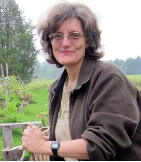The Four Pillars of Agriculture
/We are racing into a new era of agriculture. The conventional system of agriculture (as we call it) that has been practiced increasingly over the last nearly 100 years is failing us by nearly every possible measure. We have an ecological disaster of soil, animal and human health on our hands globally. Increasingly we hear about these problems along with the big one climate change, but in reality climate change is the solution, not the problem. The real problems are water, soil, and food quality—the climate change rhetoric just gets people to take notice and, of course, it keeps a lot of scientists employed.
Luckily things are changing, and I think it is largely due to four individuals who have provided us with some great information on how the environment really works and how we can manage it for a respectable future.
Here is a brief background about William Albert Albrecht on Minerals in the Soil, Elaine Ingham’s work on Soil Biology, Alan Savory’s work on Holistic Management and Rudolf Steiner’s Biodynamics.
Dr William Albert Albrecht lived from 1888 to 1994. He was chairman of the Department of Soils at the University of Missouri, was the foremost authority on the relation of soil fertility to human health. He made direct connections between poor quality crops, and ill health in livestock, by studying soils that appeared the most productive. This helped him develop a formula for ideal ratios of cations in the soil, known as the Base Cation Saturation Ratio. He published many papers on soil and animal health from 1918 to 1970. Long before the environmental movement began, he was lecturing across the USA on agricultural ecology. His theories are used worldwide today and often referred to as mineral balancing, as promoted by people like Neal Kinsey. His work and understanding of minerals in the soil are essential to create highly productive and long-term solutions to agriculture.
Dr Elaine Ingham is an American Microbiologist and the Creator of the Soil Food Web testing laboratories that have been established in 9 countries around the world. She is considered the mother of understanding soil biology. She has had an enormous impact on agricultural practices around the world and to our understanding of the complexities of the microbiology of the soil. She has done extensive research and published hundreds of articles on soil biology and eco systems including the hallmark Soil Biology Primer first published in 1999 by the United States Department of Agriculture. If you do not know of Elaine Ingham’s work, you do not understand one of the essential components to managing soils.
Clifford Allan Redin Savory is a Zimbabwean farmer and environmentalist and founder of the Savory Institute for Holistic Management of Agriculture. Throughout his life he studied and mimicked the patterns and movements of livestock and other animals in their natural environments which taught him how animals managed correctly can maintain and regenerate the soils and the earth. Savory advocates use of mob grazing and moving livestock to what he claims mimics nature, as a means to heal the environment, stating “only livestock can reverse desertification.” His regenerative agriculture systems are gaining traction around the world and appear to be the next big trend in environmental management of our farmlands.
Rudolf Joseph Lorenz Steiner was an extraordinary man and founder of the Biodynamic movement with a series of lectures in 1924 to a group of farmers concerned about the future of agriculture. Steiner’s work attempted to blend science and spiritualty which he termed Spiritual Science. His aim was to apply the clarity of thinking of western viewpoints to spiritual questions, separating his approach from what he considered to be unclear concepts of mysticism. Steiner spoke of the mineral realm, the importance of biology and the essential role of animals in agriculture. He gave these as a starting point for farmers to take forward. One of the big problems with Biodynamics today is that many still take the practices as some kind of gospel which has seriously held the movement back worldwide. One of the best books I have read to understand how Biodynamics actually works is Tuning into Nature by Phil Callahan. This book reveals the workings of electro-magnetism in the soil and plant realm and gives an excellent explanation of how this part of farm management can work. There are a number of other practices that present this area of management, check out Quantum Agriculture for more information.





